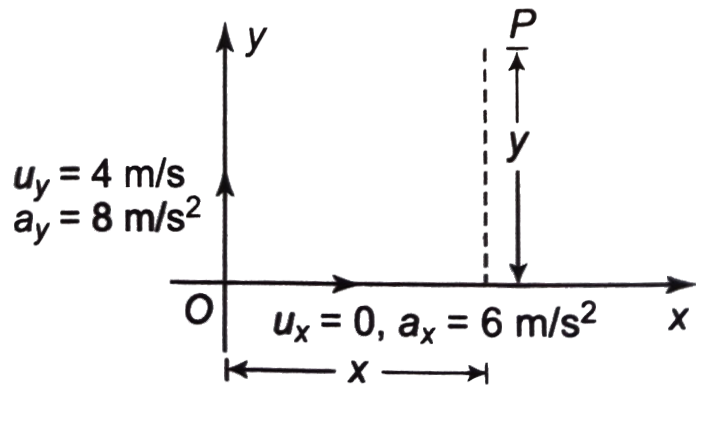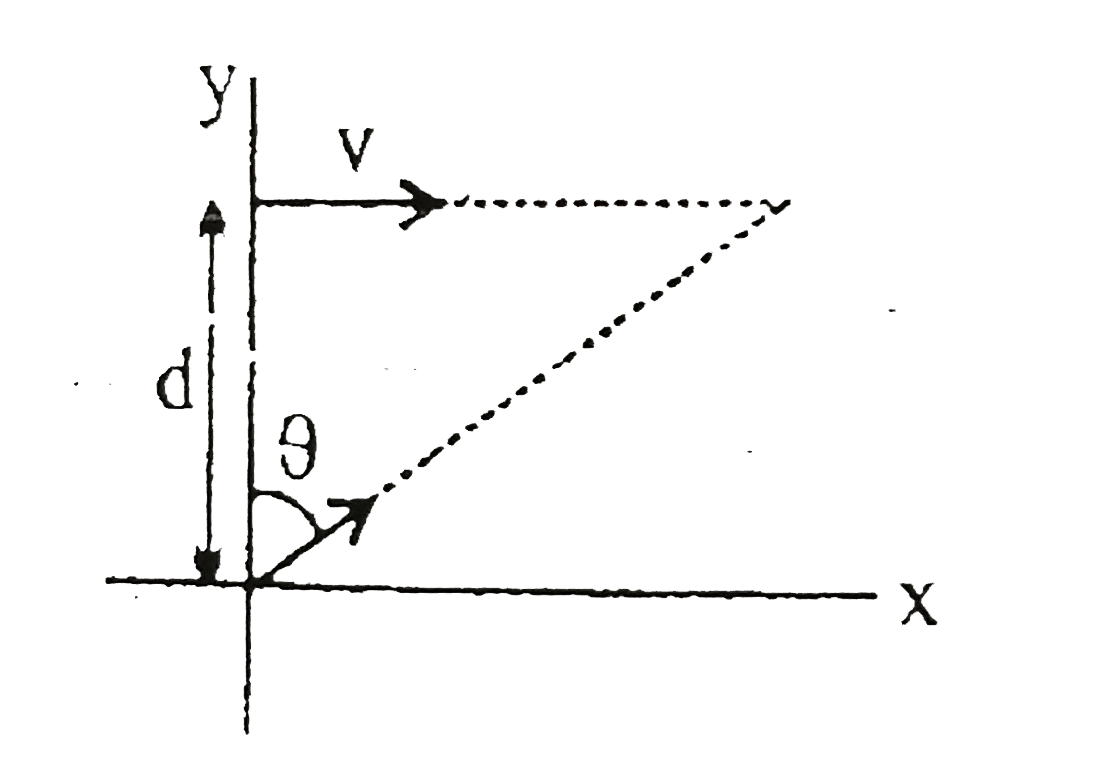A particle is given velocity 4m/s along the positive y-axis subjected to constant accelaration 10m/s2 at 53∘ with the x-axis. Find the distaplacement of a particle along the coordinate axes after 3s.


x : (constant acceleration): x=uxt+12axt2
=0+12×6×32=27m
y : (constant acceleration): y=uyt+12ayt2
=4×3+12×8×32
=12+36=48m
Coordinates of particle after 3s=(27m,48m)
Topper's Solved these Questions
Similar Questions
A particle is given velocity 3m/s along the positive x-axis subjected to constant accelaration 4m/s2 along the positive y-axis. Find the distaplacement of the particle in 2s and trajectory followed by the particle.
View SolutionAt t=0, the particle is at the origin and its velocity is 10m/s at an angle 37∘ with the x-axis. The particle moves in x−y plane with a constant acceleration of 1m/s2 along the y-axis. Find the magnitude and direction of the velocity after 2s.
View Solution
Knowledge Check
A particle constrained to move along x-axis given a velocity u along the positive x-axis. The acceleration ' a ' of the particle varies as a = - bx, where b is a positive constant and x is the x co-ordinate of the position of the particle . Then select the correct alternative(s): .
AThe maximum displacement of the particle from the starting point is u√bBThe particle will oscillate about the originCVelocity is maximum at the originDGiven data is insufficient to determine the exact motion of the particle.Three particles starts from origin at the same time with a velocity 2ms−1 along positive x-axis, the second with a velocity 6ms−1 along negative y-axis, Find the velocity of the third particle along x=y line so that the three particles may always lie in a straight line.
A−3√3B3√2C−3√2D2√2A particle moves along a straight line parallel to x-axis at a distancce d=3m from it, with constant speed of v=3m/s. Another particle stats from the origin with constant acceleration a=4m/s2 at an angle θ with y-axis along a straight line at the instant the first particle crosses y-axis. Find 'theta' such that the two particle collide.
 A0∘B30∘C45∘D60∘
A0∘B30∘C45∘D60∘
Two particles are moving along x-axis. Particle-1 starts from x=−10m with velocity 4m/s along negative x-direction and acceleration 2m/s2 along positive x-direction. Particle-2 starts from x=+2m with velocity 6m/s along positive x-direction and acceleration 2m/s2 along negative x-direction.
(a) Find the time when they collide.
(b) Find the x-coordinates where they collide. Both start simultaneously.
View SolutionA particle is moving along a straight line along x-zxis with an initial velocity of 2m/s towards positive x-axis. A constant acceleration of 0.5m/s2 towards negative x-axis starts acting on particle at t=0. Find velocity (in m/s) of particle at t=2s.
View SolutionAt time t=0, a particle is at (2m,4m). It starts moving towards positive x-axis with constant acceleration 2m/s2 (initial velocity=0). After 2 s, an additional acceleration of 4m/s2 starts acting on the particle in negative y-direction also. Find after next 2 s.
(a) velocity and
(b) coordinates of particle.
View SolutionA particle moves with a velocity (3i+4j) m/s from origin.The displacement of particle along line x=y after two seconds will be:
View SolutionIn Fig. 4-28, particle A moves along the line y = 30 m with a constant velocity →v of magnitude 3.0m/s and parallel to the x axis. At the instant particle A passes the y axis, particle B leaves the origin with a zero initial speed and a constant acceleration →a of magnitude 0.40m/s2. What angle θ between →a and the positive direction of the y axis would result in a collision?

View Solution
